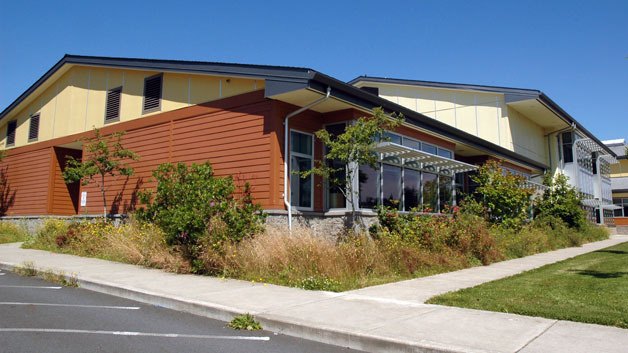MARYSVILLE — One thing that both Marysville School District officials and local residents will readily agree on is that at least a couple of the schools’ landscaping is looking rough.
Beyond that, some disagreements have cropped up, much like the weeds at Grove Elementary. MSD Superintendent Dr. Larry Nyland identified the schools’ landscaping as but one of many victims of their ongoing money crunch, while Mark Hinricksen, a Marysville resident who lives near Grove Elementary, sees it as a problem that could be resolved by better prioritization on the school district’s part.
“We do have and will have consequences and complications that come from the countless and repeated budget cuts,” Nyland said. “I think of this as the consistent disinvestment in schools and many other social services.”
Nyland noted that state cuts amount to $2.7 billion, and added that the Marysville School District has borne more than $20 million in budget cuts over the course of the past five years. He added that the district’s prioritization of student success has and will impact the state of its buildings and grounds.
“We do our best to maintain our buildings, but do so each year with fewer and fewer dollars,” Nyland said. “This year, the district reduced seven custodians, one maintenance and one grounds person.”
Although enough custodians will remain for the 2012-13 school year to heat the buildings, attend to emergencies, and clean all the health and safety areas, they will not be able to clean every classroom every day. Likewise, although the district’s lawns continue to be mowed on a schedule, Nyland conceded that weeding is done far less frequently.
“We have fewer grounds employees, and no longer have a summer program to employ youth to help keep up with the weeds,” said Nyland, who pointed out that the district is also using fewer sterilization chemicals. “Add unseasonal rains, and we have a bumper crop of weeds.”
“It looks like a meth lab,” Hinricksen said of the Grove Elementary grounds. While Hinricksen regularly drives around town to check out the other schools, aside from his concerns about the lack of maintenance on Totem Middle School’s trees, the bulk of his complaints are reserved for Grove Elementary, whose grounds he not only believes could be better maintained even under current budget conditions, but whose landscaping designs he has argued were wrongheaded to begin with.
“It’s a horrible design,” said Hinricksen, who asserted that the appearance of Grove’s grounds has been poor for the past two years. “You’ve got way too many frou-frou plants that the kids are going to trample. They lost half the landscaping by planting it in the wrong spots for the shade and the sun, and they spent thousands of dollars doing this.”
Of particular note to Hinricksen are the “kinnikinnick” ground-cover plants that have died from being covered up by weeds that have grown four to five feet tall in some cases.
“They must have paid $5 each for hundreds of them,” Hinricksen said. “Why is this one school in particular being ignored? Grove is only a few years old and we’ve abandoned it already, while the district has built a new $94.5 million high school while claiming poor pockets.”
Hinricksen suggested turning the school district’s groundskeeping duties over to private enterprise, which he touted as continuing to meet the challenges of the current economy in ways that he sees the district as falling short. By contrast, Nyland explained that the district has already established a process through which its principals can work with their PTAs to identify and schedule feasible improvement projects, which solicit volunteer labor from the community in exchange for the district supplying certain amounts of supplies and supervision.
Kimberly DeLap has taken part in five community cleanups of Allen Creek Elementary, and wouldn’t mind seeing all of the district’s schools eventually following suit.
“You can argue that the school district should have fixed this stuff,” DeLap said. “I can certainly understand the schools’ neighbors who are annoyed by their state of disrepair. My husband has that perspective. But I’d rather roll up my sleeves and try to solve the problem myself.”
DeLap echoed Nyland’s point that the key shortfall in such projects is a lack of manpower, since the district is often able to provide many of the necessary materials. She encouraged would-be volunteers to contact Marysville School District Grounds Maintenance Supervisor Keith Stefanson as their first step, since the ensuing process requires them to fill out the proper forms and receive sign-offs from the labor unions to conduct the work.
“Maybe the sense that the district isn’t spending its money properly is why people are reticent to vote for bonds and levies,” DeLap said. “But when students see adults taking care of their schools, whether it’s through community cleanups or even just picking up trash outside during lunch, they think twice about how they treat their own schools.”



